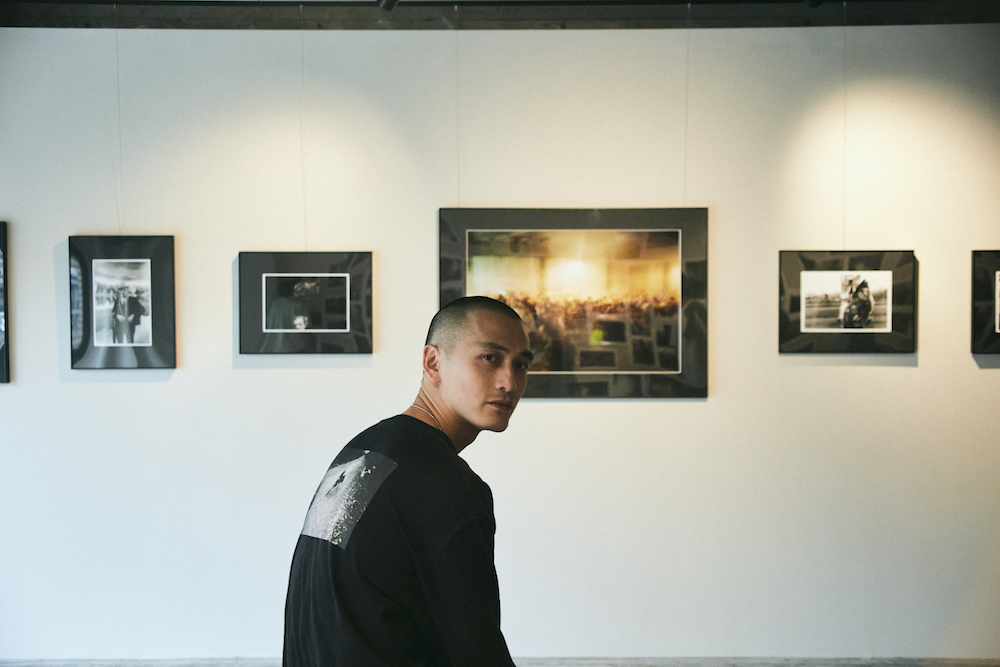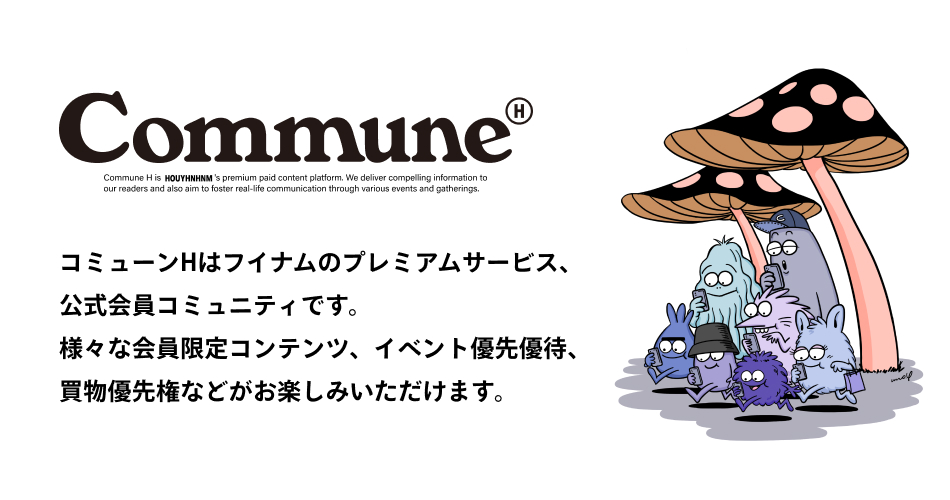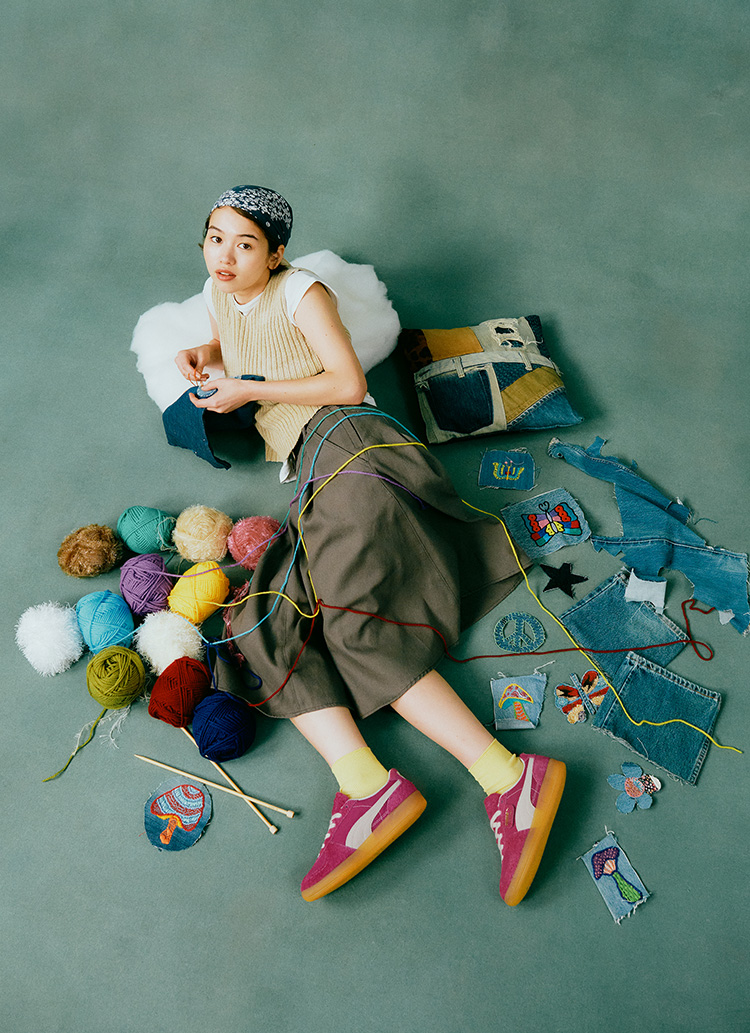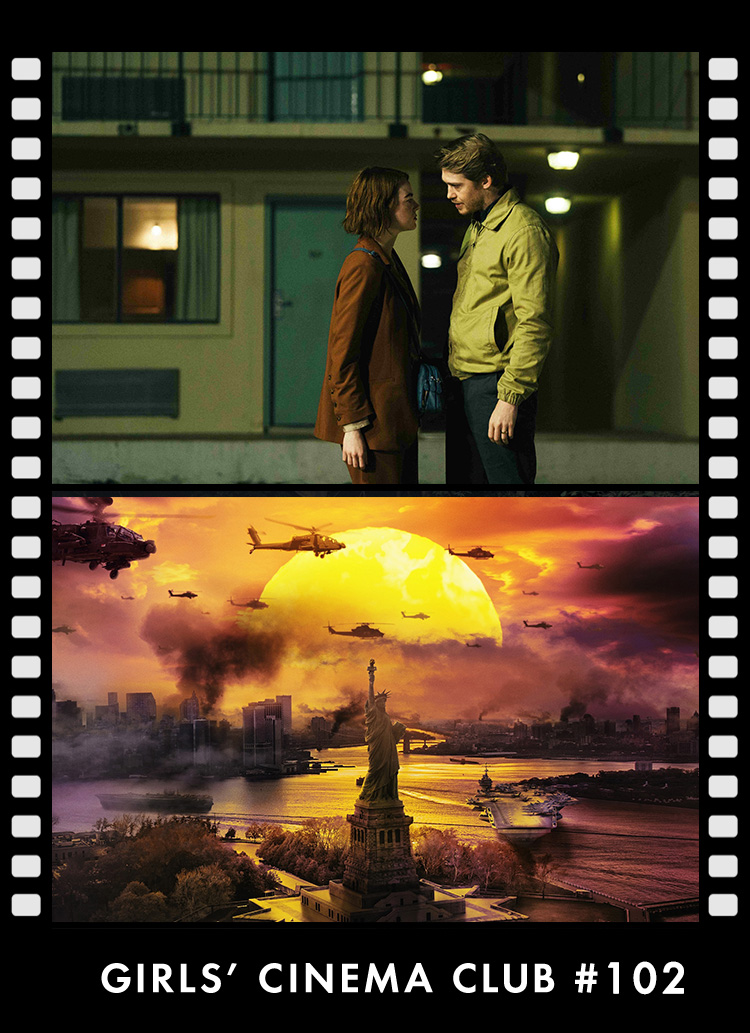Would you like to talk over a cigarette?" The interview started with such an unexpected question.
The voice of the photographer is Takeshi Uematsu . While working as a top model, including walking the runways of numerous maison brands, Takeshi Uematsu also travels to the third world and turns his viewfinder to the world yet to be seen. His first solo exhibition "Berlin is Berlin" is being held at Studio 4N (FourNation).
The theme chosen for the solo exhibition is "Berlin, 30 years after the fall of the Wall. This was the era of With Corona, when travel from one country to another and contact between people were restricted. What is the city that once died trying to tell the modern society divided by an invisible wall? I felt as if the people living in Berlin, with their unquenchable thirst for freedom, were teaching us the art of survival in this age of stagnation.
PROFILE
. Born in Yamanashi Prefecture in 1985. She has worked as a model for prestigious fashion houses such as Louis Vuitton, Lanvin, and Paul Smith. She also spent three years living with local people in Thailand, India, Bangladesh, and Berlin, capturing the local culture and lifestyle through her own filter, and is currently expanding her activities as a photographer in addition to modeling.
Official Site
Instagram: @tksu1023
. a city of freedom where people , and even dogs, are not chained up.
How did you get started in photography?
I felt uncomfortable in my work as a model. No matter what I did, I felt like I was in limbo, or that I was just walking on rails. So I decided to travel to a world I didn't know. So I bought a digital camera and traveled around Southeast Asia, including India and Bangladesh, for about seven months. That was the beginning.
You wanted to see the world outside of modeling.
Yes, that's right. I had been allowed to participate in shows abroad as a model, so I had experienced the glamorous world of New York, Paris, and Milan, so I thought that if I went to an unorganized, so-called third world place, something would change in me.
Did you spend 7 months in Southeast Asia while living there as a backpacker?
Yes, I did. I moved around Southeast Asia, and ended up living in a shipyard in Bangladesh for about 3 months. (. I haven't posted that picture anywhere yet.
After that trip to Southeast Asia, you came to Berlin this time. How long did you stay in Berlin?
The shoot itself was done 3 times, about 3 months total. The first one was in 2013, and the main ones were in '18 and '19. It was exactly 30 years since the fall of the Berlin Wall.
But at first I had no intention of filming, and a friend of mine who lives in Berlin invited me to a very interesting club and said, "Come on over. The experience was so sensational. . The train station was in shambles, with swirling barbed wire everywhere. Now it's been cleaned up a lot, but the desolate atmosphere was cool. There are more naked people than clothed people in the club. And it starts on Saturday night and lasts until Monday evening. It's pretty bad (laughs).
. So it's not a one-night stand (laughs).
. yes, I got fed up with it. Also, there was a kind of a mix of a demo and a parade. It was just a mess. They put speakers on trucks and played techno at high volume, and many trucks were connected to each other. It was a bit like a more compact version of the Love Parade that used to be held in Germany. The parade also had a slogan like "Let it go! and other slogans like "You've had enough, how far can you go? You guys have had enough, how much more freedom do you want?
What made you decide to come back to Berlin after your first visit in 2013?
. the first time I went there, I took a picture of a dog running at full gallop. The very first thing I did was develop that picture in a rented darkroom. But I was not satisfied with it no matter how many times I tried over a period of about six months. The owner of the rental darkroom was so disappointed with me. When I finally got that picture, after burning many, many pictures, I thought, "Ah, I want another picture to match this one! I thought, "I bought these shoes, so I bought these pants. I bought these shoes, so I want these pants, too.
. That was the first piece, wasn't it?
. it was like I was visiting again to fill in the others. The dog was also interesting. It was a Doberman or a shepherd, and it was off-leash. Dogs are allowed to run free in Berlin, and they are even allowed on trains. . But because of the strict training system, all the dogs are good dogs. If people are free, dogs are free, too (laughs).
. . no one is tied to the lead, are they?
Yes, that's another good point.
You can stay , but you can't be present.
When I looked at your photos, I felt that they did not show a beautified Berlin, but rather, they showed the city as it really is, with its garbage strewn streets and frustrated people's emotions.
Whatever the expression, I was taking pictures while thinking, "Berlin is Berlin. Technique and concept were of secondary importance, and I think I just wanted to take the picture. (I don't think there is any need to have a reason (for releasing the shutter). It's when you make it too complicated that the world becomes a hassle (laughs).
. And looking at the pictures, I got the impression of anarchism. Are there many people with that kind of ideology?
Berlin has a lot of anarchy. . that's probably because of the reaction to the Berlin Wall being built and the repression. They were betrayed by the government, so they have tremendous individual power. They don't want to let others take care of them.
. I see that the scars of the 30 years and earlier still remain deep in Berlin.
I think that is probably true. The Berlin Wall divided the East from the West, and the East was communist and the West was capitalist . So I heard that after the wall fell, most of the people who had been oppressed in the East flowed to the West. They got a ticket to freedom, and they wanted to leave the East behind and live a good life. . Of course they did.
But some people stayed behind on the east side . But they have no money or resources, and the ruins are getting worse. But the people in the east have more energy than anyone else, saying, "We have nothing, but freedom and a future. And I think that is the foundation of East Berlin, with people partying, drawing pictures, and taking photos among the ruins.
When I witness these things, I think that in the end, we have to make our own future. That is why Berlin is Berlin. It cannot be described simply as a city in Germany.
Three types of zines sold at the exhibition, each containing the same works but bound in a different way to give a completely different impression.
. Is it a kind of independent state? It has formed its own culture, and the people there are also different?
. Yes, I am different from people in any other country. Anyway, if you don't have a sense of self, you feel like you will disappear in a place like Berlin. You can stay, but you can't exist.
The Corona Disaster, with its invisible walls formed, is reminiscent of Berlin 30 years ago.
I think everything seems to be different from developed countries like Japan and the U.S.
That's really true. The reason why I decided to shoot in Berlin is because I felt suffocated by all of the restrictions of Japanese society, such as management, ties, and so on. The title "model" may sound glamorous, but it cannot be categorized by that alone.
. Certainly, there are many different types of models, and each has its own identity. . However, there is a tendency to try to convey only a beautiful image without focusing on that.
. yes, that's right. . I think it's not just models, but everyone. It was during this time of frustration that I came across Berlin, and it gave me a shock. When I was in Berlin, I honestly felt that this is what I wanted people in Tokyo to see.
I guess you could say that Uematsu-san resonated with your destructive impulse and your quest for freedom.
Maybe it was the city of Berlin that made me do it, but maybe it was also me. I thought, "Why don't we just tear down the walls we don't need?
Did you find many aspects of the film that were linked to your own moods?
. it was a crazy link, wasn't it? Isn't the situation in Corona today somehow similar to Berlin 30 years ago?
. - That's for sure. Not that an actual wall has been built, but you get the feeling that travel to the country and contact with people is restricted, or some sort of invisible wall.
It really is. It is truly fractured. . On the contrary, I am glad that we were able to do this at this time. Berlin was actually divided until just 30 years ago, and they broke down the wall and gained freedom. There are many things we can learn from that.
Deeply rooted, the contrast between the West and the East remains.
I was surprised to see the police doing graffiti when I saw your Stories.
That one is interesting , isn't it? As for graffiti, it's pretty lurid. It was all over the east, a remnant of the abandoned days. . . I mean, it would be more difficult to find a place where there is no graffiti. You can freely paint on public walls, and there are people who start painting on Sunday mornings. And it's not only young people, but also old men and women.
A limited number of photo T-shirts in collaboration with Kohei Makita's brand "THE UNION" will also be released. The title is "Dance.
That's amazing. You are doing graffiti with spray paint, just like an old man sketching in Yoyogi Park (laughs).
Yes, in Japan, it would never happen (laughs). But in the West, it is not at all.
Although the wall has gone down, is there still a disparity between the West and the East?
It still seems to be there. I lived on the west side for a little while too , but the atmosphere was totally different. And there are many immigrants. The low cost of living makes it easy for young people to come here naturally. There are so many artists. But there aren't that many people to buy them, so everyone does whatever they want (laughs). So it seems that many people make their works in Berlin and then go to other cities or Amsterdam to sell them.
. and I like the distribution channels for that nostalgic art.
Yes, that's right. They value the good old days, don't they? Anyway, they like bottles , and beer and cola are bottles. Advertisements were mostly on paper, not digital. Posters on telephone poles were pasted on top of each other, so they looked like the rings of a tree.
This is "Rat. He and Kohei Makita developed a relationship through their love of public baths.
No matter what direction the world goes , I am me and Berlin is Berlin.
I think they are not trying to be cool, but rather, they see it as a kind of sprechkoll.
I guess that's true when you put it that way. I think it's really cool that they are not just punks or something because they don't have money, but also because they have their own style and justice. They have the mindset of "We'll do what we want to do, so leave the rest to us.
I think that each of us is seeking freedom.
Yes, I think that is strong. Nowadays, rent is going up, and I often saw things like rent demonstrations. Also, people who used to live in Berlin are leaving the city, and I felt that the city is gradually changing. It has been 30 years since the fall of the Wall, and I think I was able to capture this turning point in the city's rebirth in my photographs.
I thought the words "No matter what direction the world goes, I am still me and Berlin is still Berlin" spelled out with the key visual was a perfect fit for the current situation. I thought it was a phrase that fits perfectly with the current situation. Did you come up with those words while you were in Berlin?
Yes, when I was over there. There is a picture of a moped on fire, and as I was gazing at the flames, a stranger pointed at the moped and said, "This is Berlin. I quickly replied, "Berlin is Berlin. People in the city were saying "Berlin is Berlin" as if it were a common phrase, and the words just popped out of my mouth. At that moment, I had an epiphany. I felt like I finally had a presence in Berlin.
. The punks with their middle fingers raised in the key visual also seem to symbolize Berlin.
. At first, I didn't intend to use this photo as the main subject. But when I looked at the photos I took, I felt that while the crowd was parading forward, one person was looking in the opposite direction, and it really embodied Berlin. I didn't want to write a lengthy statement, but just wanted people to look at it and get a sense of it. If you see it, you will understand. It is a time when it is becoming more important to have the feeling that "I am myself," and I hope that this will be an opportunity for people to feel that way.
Photo_Hiroshi Nakamura
TAKESHI UEMATSU photo exhibition "Berlin is Berlin
Dates: ~August 10 (Monday)
Location: Studio 4N (FourNation)
Address: Avenue Side Daikanyama III 3F, 2-1 Sarugaku-cho, Shibuya-ku, Tokyo
Hours: 13:00 - 20:00
Admission: Free
Takeshi Uematsu official website










